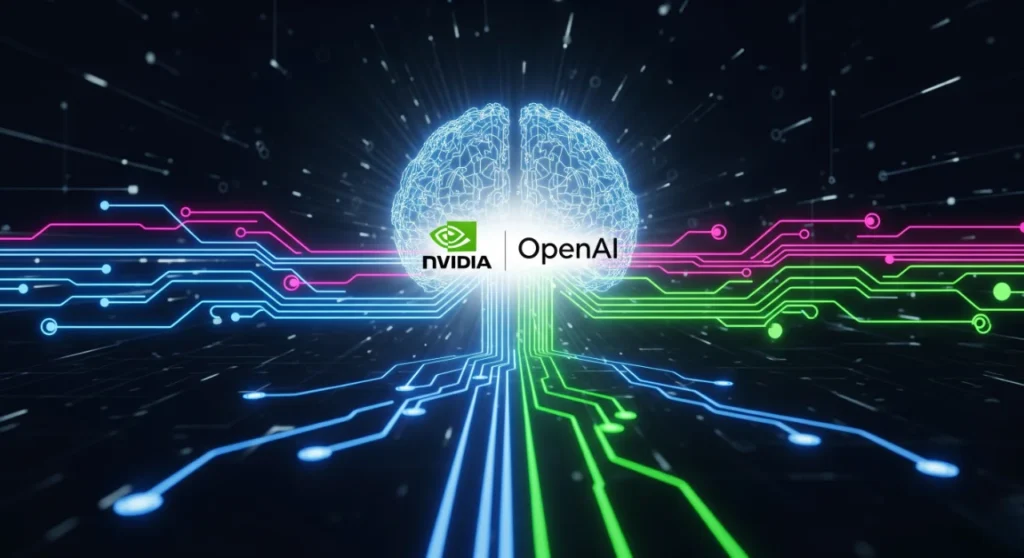OpenAI and NVIDIA have released two powerful open-weight AI models—gpt-oss-120B and gpt-oss-20B—designed for unmatched performance on the world’s largest AI infrastructure. This isn’t just another model drop. It’s a foundational shift in who can build next-gen AI, how fast, and at what scale.
OpenAI and NVIDIA Join Forces to Democratize AI Development at Scale
OpenAI and NVIDIA are shaking up the AI world once again—this time by making powerful AI more accessible than ever before. The two companies have just launched two new open-weight large language models (LLMs)—gpt-oss-120B and gpt-oss-20B—optimized for NVIDIA’s cutting-edge Blackwell architecture.
These models don’t just push performance boundaries—they’re also open for developers, enterprises, researchers, and governments across every industry and geography. And with performance clocking at 1.5 million tokens per second on the new NVIDIA Blackwell GB200 NVL72 systems, the implications are massive.
Key Takeaways:
- Two open models from OpenAI: gpt-oss-120B and gpt-oss-20B
- Optimized for NVIDIA Blackwell, the world’s largest AI inference infrastructure
- Available as NVIDIA NIM microservices for easy deployment anywhere
- Trained on NVIDIA H100 GPUs, performing best on CUDA-based platforms
- Supports frameworks like Hugging Face, Ollama, vLLM, and more
- Real-time inference at scale opens doors for enterprise-grade generative AI
Why This Changes Everything
OpenAI and NVIDIA’s partnership isn’t new—but this level of open-access AI at such high performance is. The models were trained on NVIDIA H100 GPUs and are now finely tuned to run on Blackwell, a platform purpose-built for next-gen AI scale.
Whether you’re running a startup in generative design, automating healthcare diagnostics, or deploying reasoning agents in manufacturing, you can now leverage state-of-the-art AI on infrastructure that’s designed to perform at warp speed.
With inference speeds peaking at 1.5M tokens/sec and new microservice deployment via NVIDIA NIM, even small teams can launch powerful applications with enterprise-grade privacy and security baked in.

The Blackwell Advantage
Underpinning all of this is NVIDIA Blackwell, the latest rack-scale AI architecture. It features 4-bit NVFP4 precision, enabling trillion-parameter models to run efficiently while minimizing memory and energy costs.
It’s not just faster—it’s smarter. And for enterprises looking to optimize ROI in AI, Blackwell may be the missing piece.
CUDA Community Gets a Power Boost
There are now over 450 million CUDA downloads globally, and OpenAI’s new models are designed to fit right into this ecosystem. Whether you’re running models on RTX-powered desktops or at cloud-scale with DGX, you’re in.
Even better, NVIDIA and OpenAI have worked with leading frameworks like Hugging Face, llama.cpp, FlashInfer, TensorRT-LLM, and vLLM to ensure full compatibility, flexibility, and performance for all kinds of developers.
From Secret Labs to Open Access
This partnership began in 2016, when NVIDIA CEO Jensen Huang delivered OpenAI its first DGX-1 supercomputer. Today, that same collaboration is powering a new generation of AI tools—open, fast, secure, and built for scale.
From deep research labs to solo devs in a garage, these models aren’t just technical marvels. They’re a call to build, a reminder that the AI revolution isn’t happening behind closed doors—it’s now open for everyone.
Conclusion
As the AI arms race heats up, this OpenAI-NVIDIA drop may be the clearest signal yet: the future of AI is open, fast, and ready to deploy.
Whether you’re a builder, a business leader, or just AI-curious, it’s worth paying attention. The tools that define the next industrial revolution are no longer locked away—they’re right at your fingertips.
Source: NVIDIA
